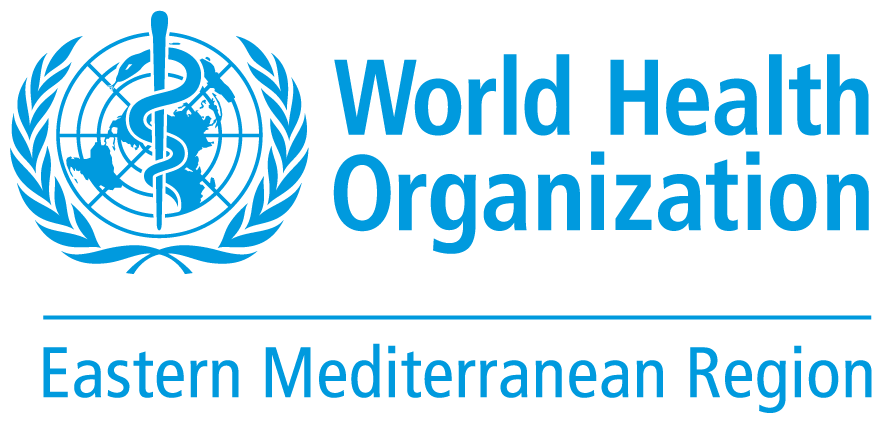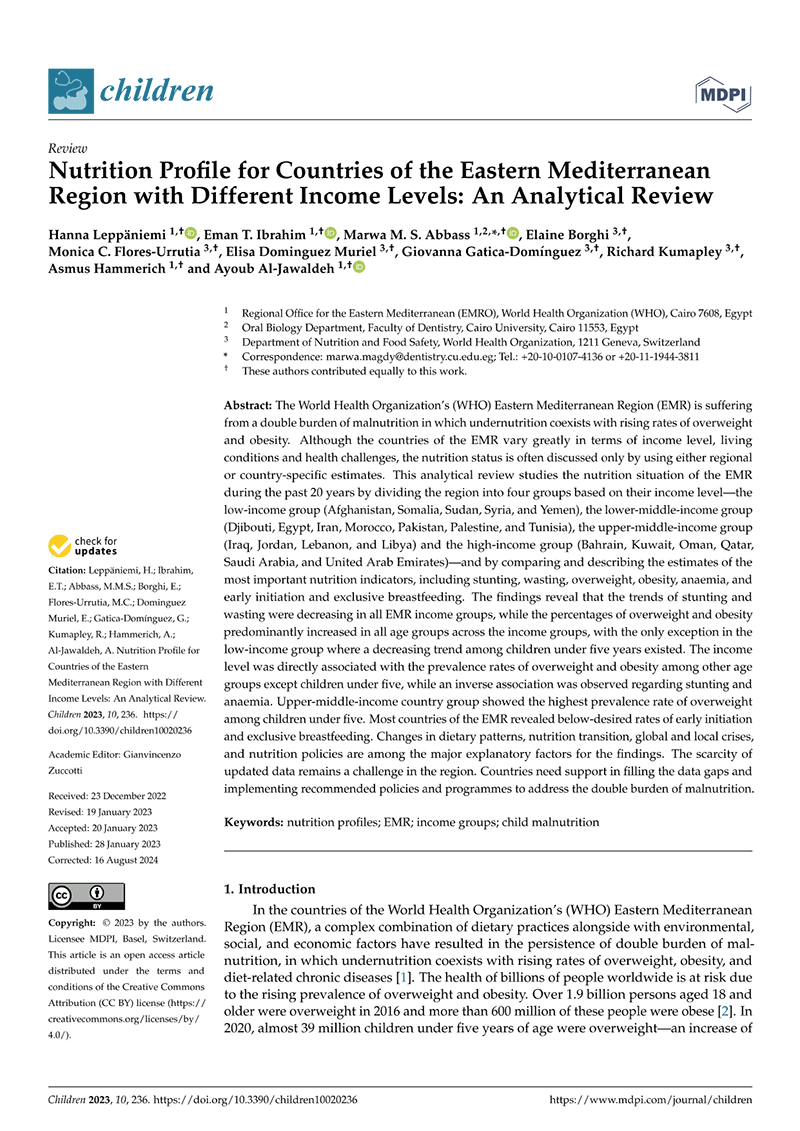
Nutrition profile for countries of the Eastern Mediterranean Region with different income levels: an analytical review
Publication date: 2023
A recent analytical review of the WHO's EMR reveals a persistent double burden of malnutrition, with undernutrition coexisting with increasing overweight and obesity rates. The review, which divides EMR countries into four income groups, examines trends in key nutrition indicators over the past 20 years, including stunting, wasting, overweight, obesity, anemia, and breastfeeding practices. Findings indicate a decrease in stunting and wasting across all income groups, but a rise in overweight and obesity in most age groups. The review emphasizes the need to address data scarcity and support countries in implementing effective policies and programs to combat the double burden of malnutrition in the EMR.
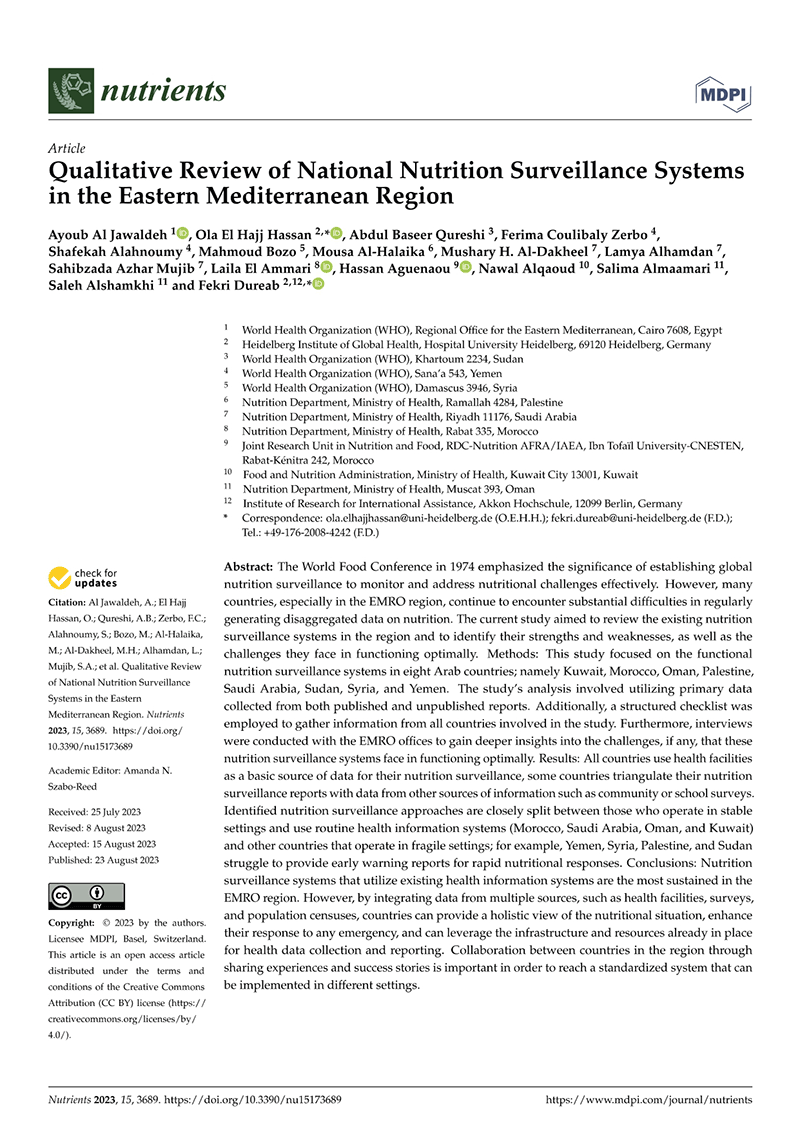
Qualitative Review of National Nutrition Surveillance Systems in the Eastern Mediterranean Region
Publication date: 2023
Many countries, especially in the EMRO region, continue to encounter substantial difficulties in regularly generating disaggregated data on nutrition. The study aimed to review the existing nutrition surveillance systems in the region and to identify their strengths and weaknesses, as well as the challenges they face in functioning optimally. In conclusions, nutrition surveillance systems that utilize existing health information systems are the most sustained in the EMRO region. However, by integrating data from multiple sources, such as health facilities, surveys, and population censuses, countries can provide a holistic view of the nutritional situation, and enhance their response to any emergency.
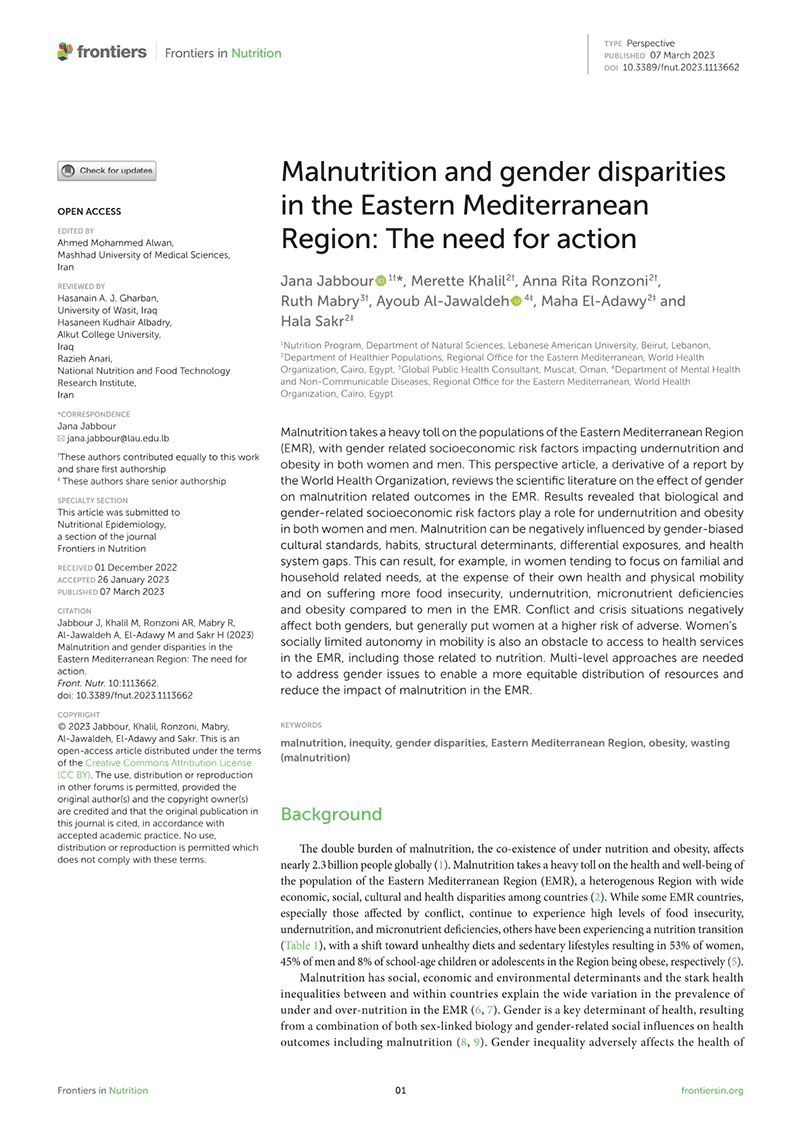
Malnutrition and gender disparities in the Eastern Mediterranean Region: the need for action
Publication date: 2023
Nutrition for optimum growth and physical development is acquired by adequate infant feeding practices. The data showed that the majority of the products were non-compliant to the regulations and the manufacturers’ nutrition facts labels. The results stated also that the contribution to the daily value for the saturated fatty acids, added sugars, and protein exceeded the daily recommended intake for most infant formulas and baby food products. In conclusions, this requires careful evaluation from policymakers in order to improve the infant and young children feeding practices.
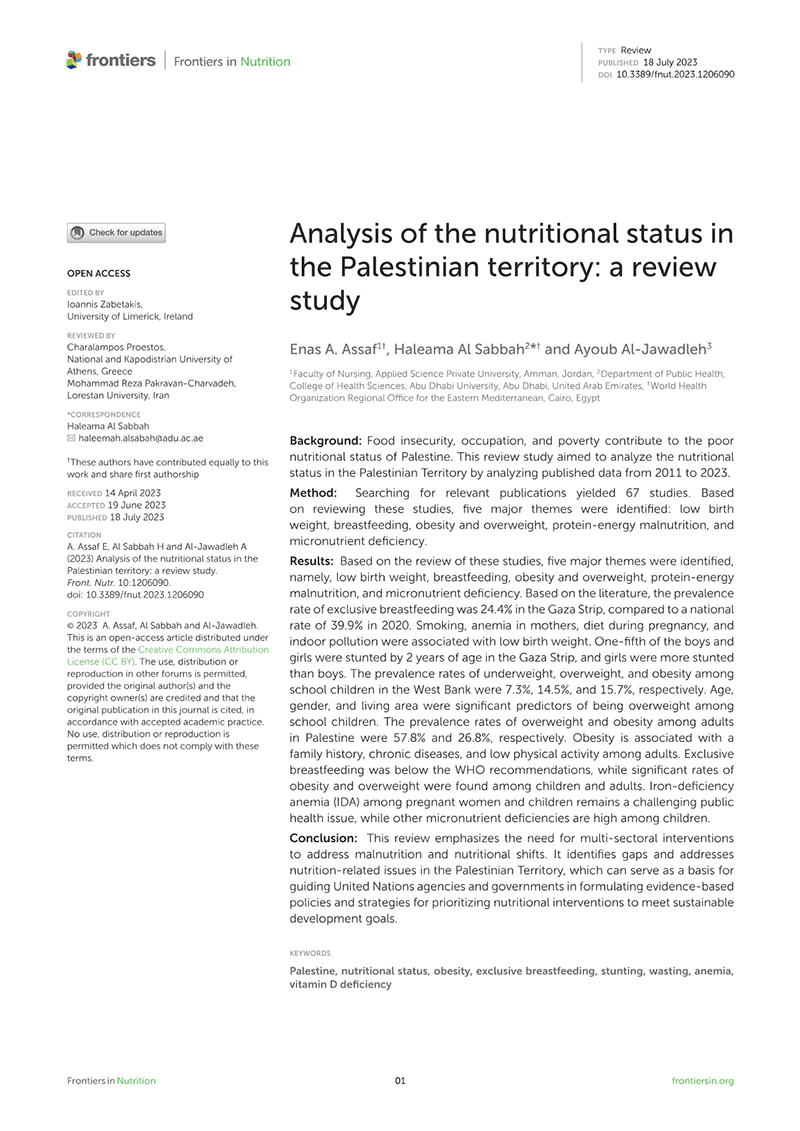
Analysis of the nutritional status in the Palestinian territory: a review study
Publication date: 2023
Nutrition for optimum growth and physical development is acquired by adequate infant feeding practices. The data showed that the majority of the products were non-compliant to the regulations and the manufacturers’ nutrition facts labels. The results stated also that the contribution to the daily value for the saturated fatty acids, added sugars, and protein exceeded the daily recommended intake for most infant formulas and baby food products. In conclusions, this requires careful evaluation from policymakers in order to improve the infant and young children feeding practices.

Nutrition profile for countries of the Eastern Mediterranean Region with different income levels: an analytical review
Publication date: 2023
A recent analytical review of the WHO's EMR reveals a persistent double burden of malnutrition, with undernutrition coexisting with increasing overweight and obesity rates. The review, which divides EMR countries into four income groups, examines trends in key nutrition indicators over the past 20 years, including stunting, wasting, overweight, obesity, anemia, and breastfeeding practices. Findings indicate a decrease in stunting and wasting across all income groups, but a rise in overweight and obesity in most age groups. The review emphasizes the need to address data scarcity and support countries in implementing effective policies and programs to combat the double burden of malnutrition in the EMR.
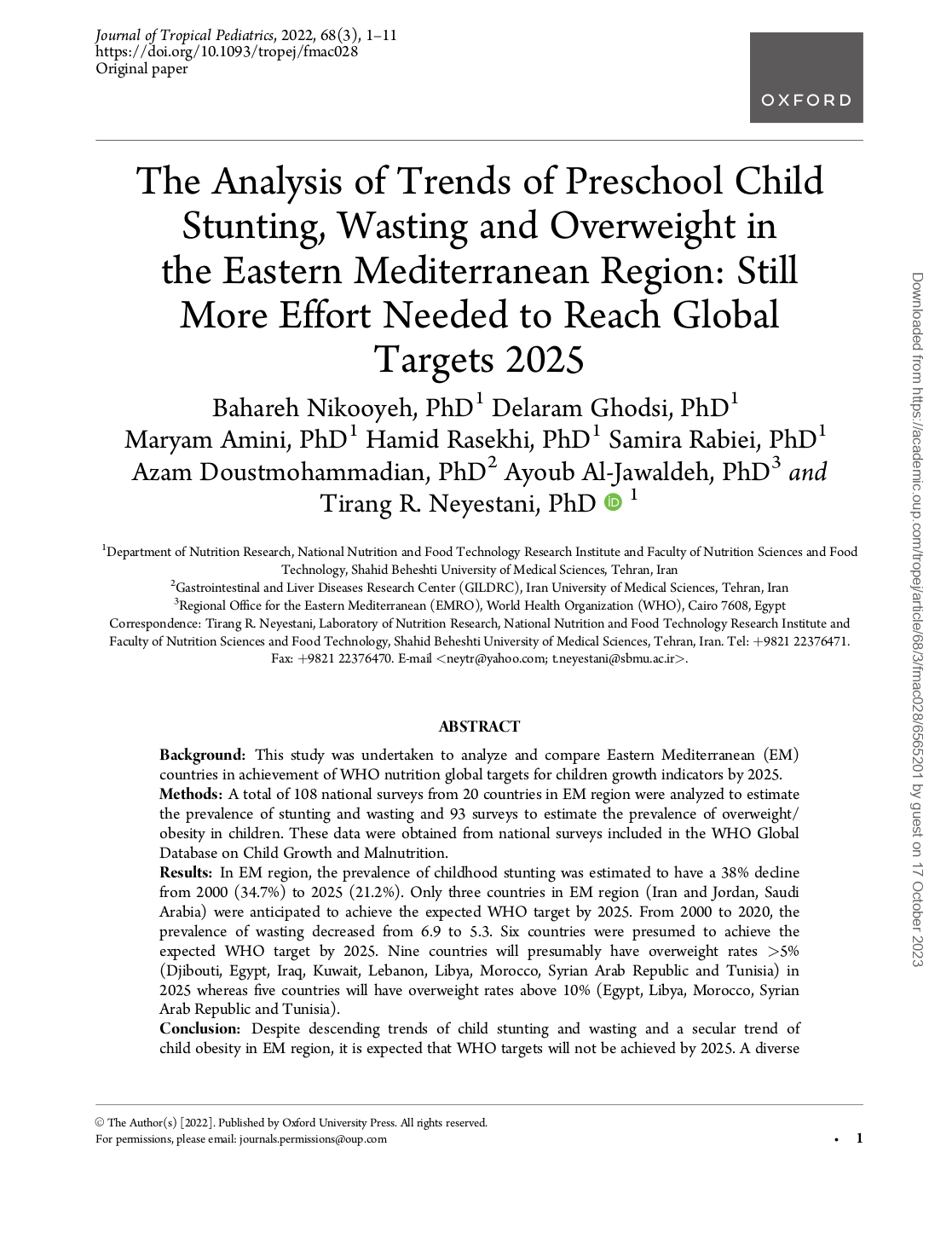
The analysis of trends of preschool child stunting, wasting and overweight in the Eastern Mediterranean Region: still more effort needed to reach global targets 2025
Publication date: 2022
This study analyzes the progress of Eastern Mediterranean (EM) countries toward achieving the WHO's global nutrition targets for children by 2025. While there has been a decline in child stunting and wasting, and a steady rise in child obesity, the study concludes that the WHO targets are unlikely to be met by 2025. Given the region's diverse socio-economic conditions, tailored action plans are necessary. Achieving these targets will require international cooperation, political commitment, and active involvement from families.
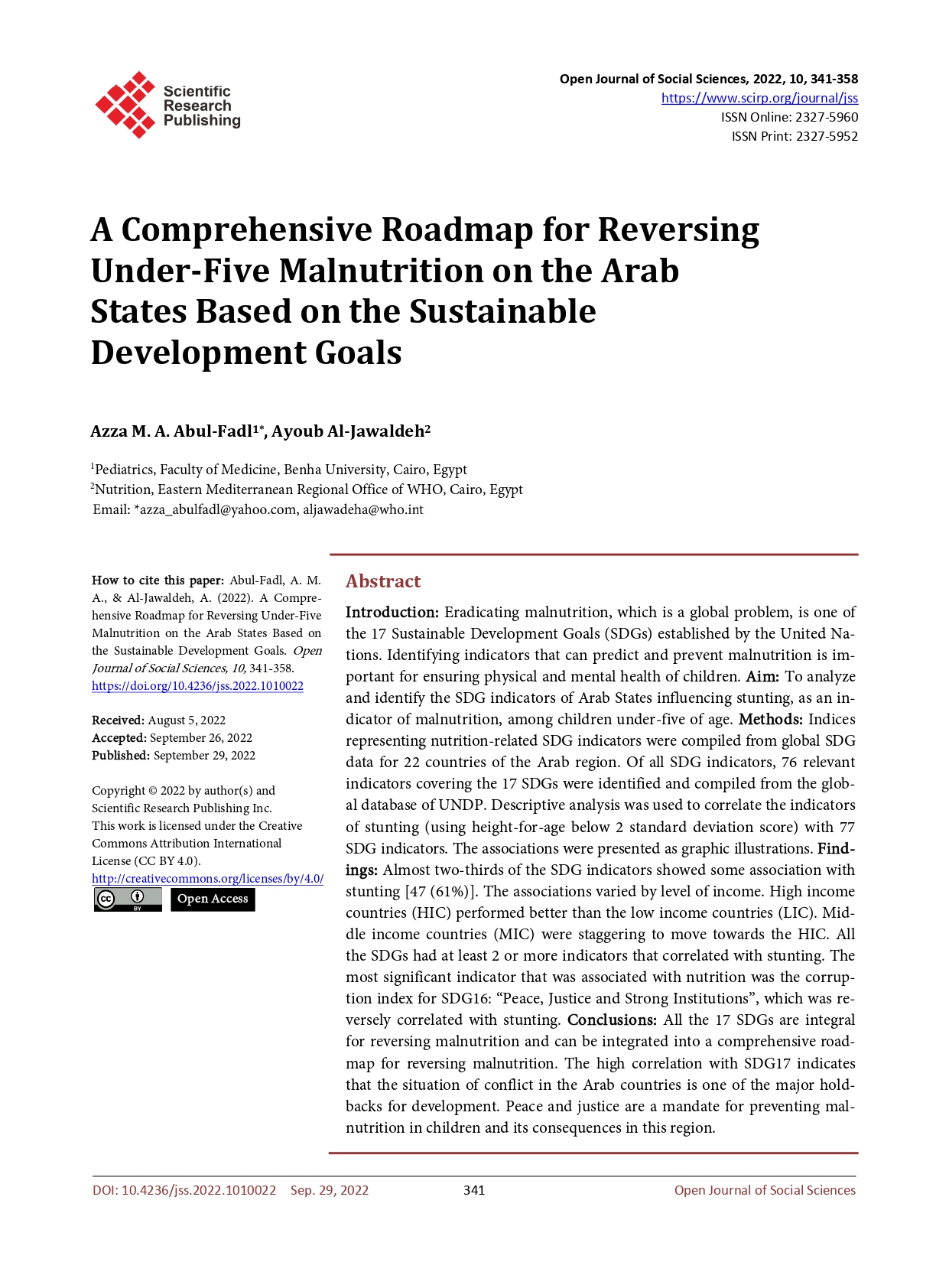
A comprehensive roadmap for reversing under-five malnutrition on the Arab states based on the sustainable development goals
Publication date: 2022
Eradicating malnutrition, which is a global problem, is one of the 17 Sustainable Development Goals (SDGs) established by the United Nations. This study aims to analyze and identify the SDG indicators of Arab States influencing stunting, as an indicator of malnutrition, among children under 5. The study concludes that all the 17 SDGs are integral for reversing malnutrition and can be integrated into a comprehensive roadmap for reversing malnutrition. The high correlation with SDG17 suggests that conflict in the region is a significant obstacle to development.
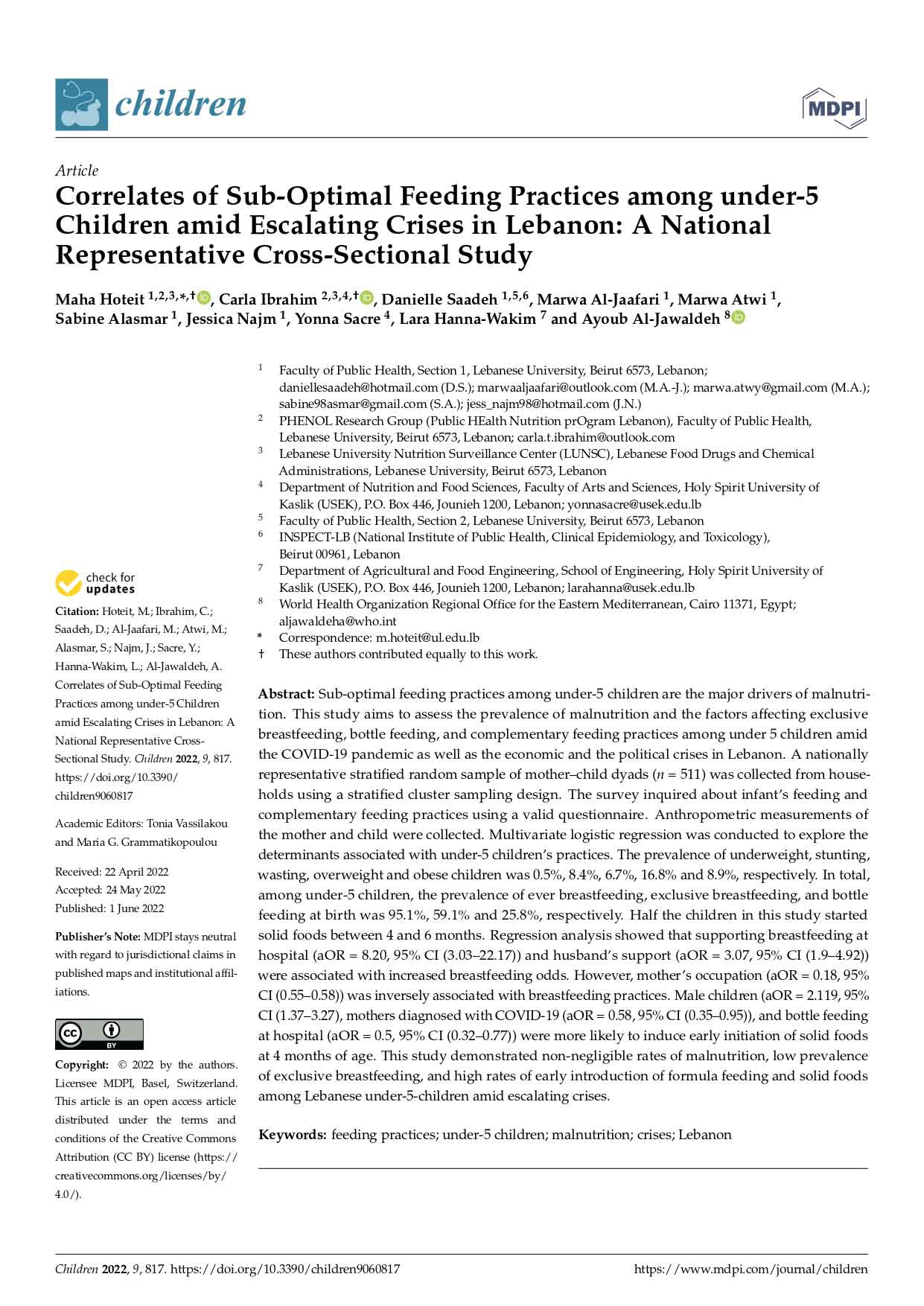
Correlates of sub-optimal feeding practices among under-5 children amid escalating crises in Lebanon: A national representative cross-sectional study
Publication date: 2022
Sub-optimal feeding practices among under-5 children are the major drivers of malnutrition. This study aims to assess the prevalence of malnutrition and the factors affecting exclusive breastfeeding, bottle feeding, and complementary feeding practices among under 5 children amid the COVID-19 pandemic as well as the economic and the political crises in Lebanon. To conclude, this study demonstrated non-negligible rates of malnutrition, low prevalence of exclusive breastfeeding, and high rates of early introduction of formula feeding and solid foods among Lebanese under 5 children amid escalating crises.
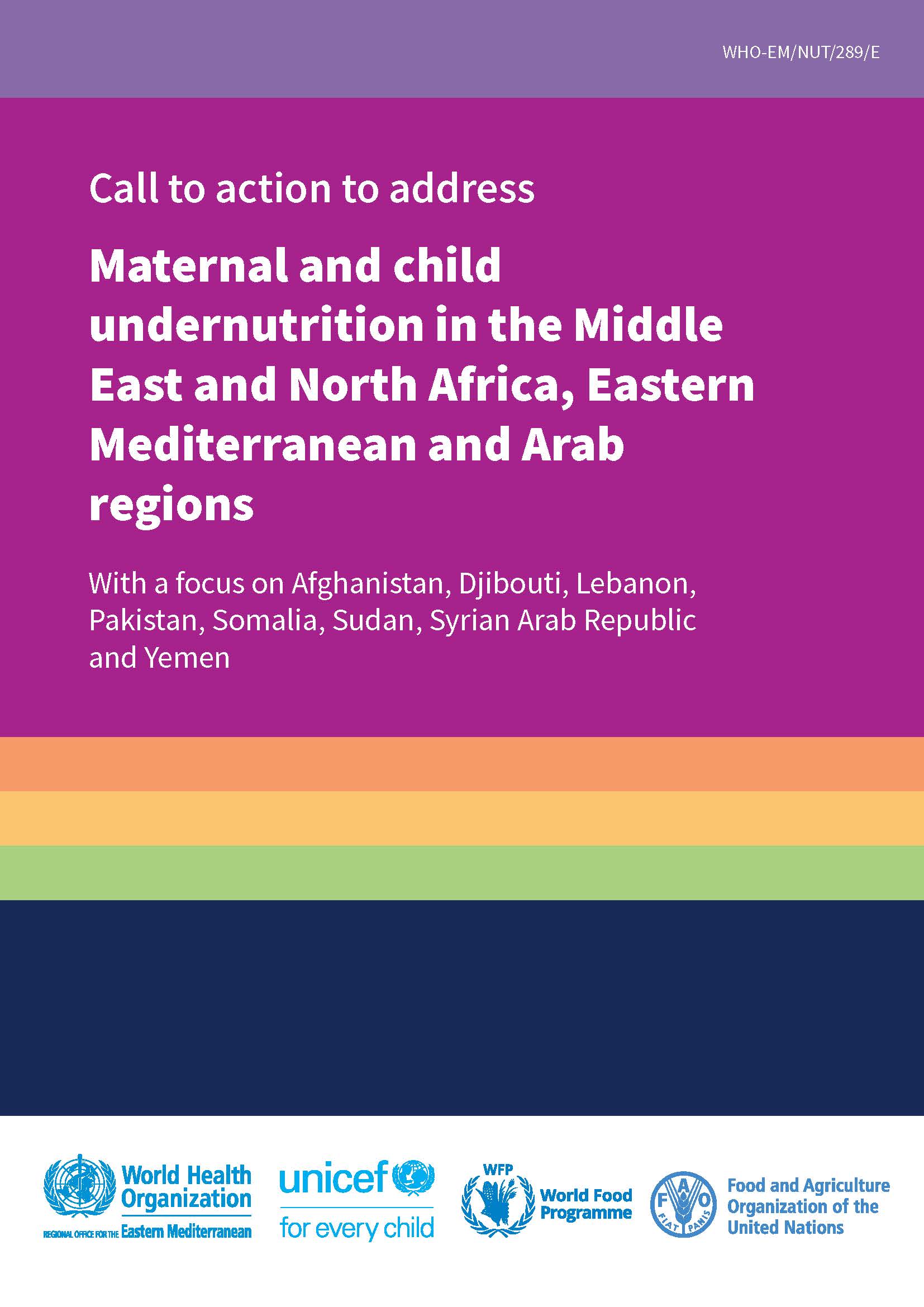
Call to action to address maternal and child undernutrition in the Middle East and North Africa, Eastern Mediterranean and Arab regions with a focus on Afghanistan, Djibouti, Lebanon, Pakistan, Somalia, Sudan, Syrian Arab Republic and Yemen
Publication date: 2022
Malnutrition in all its forms takes a heavy toll on the health, well-being and sustainable development of countries in the Middle East and North Africa, Eastern Mediterranean and Arab regions. Infants, young children, pregnant women and breastfeeding mothers, in particular, face significant risks to their nutritional status and well-being in contexts where access to essential health and nutrition services and affordable healthy diets is constrained. This call to action highlights some immediate priority areas to address the high undernutrition in the context of the current food security situation, the ongoing pandemic and the multiple crisis or post-crisis situations in the regions.

Households’ food insecurity and their association with dietary intakes, nutrition-related knowledge, attitudes and practices among under-five children in Gaza strip, Palestine
Publication date: 2022
The study aimed to determine the households' food insecurity and their association with dietary intakes, nutrition-related knowledge, attitudes and practices (KAP) among under-five children in the Gaza Strip, Palestine. To conclude, the children from food-insecure households had a high prevalence of moderate underweight, stunting, wasting, and acute undernutrition. Moreover, low economic status, poor dietary intake, low levels of nutrition-related KAP, and lack of dietary diversity could contribute to the high levels of food insecurity among under-five children.

The analysis of trends of preschool child stunting, wasting and overweight in the Eastern Mediterranean Region: still more effort needed to reach global targets 2025
Publication date: 2022
This study was undertaken to analyze and compare the progress made by countries in the Eastern Mediterranean Region (EMR) countries in achieving the WHO nutrition global targets for children's growth indicators by 2025. Despite descending trends of child stunting and wasting and a secular trend of child obesity in EMR, it is expected that WHO targets will not be achieved by 2025. A diverse socio-economic condition in EMR countries necessitates different action plans. International determination, political commitment and, above all, involvement of the families are needed to achieve 2025 targets for child stunting, wasting and overweight/obesity.

Aflatoxin b1 occurrence in children under the age of five’s food products and aflatoxin m1 exposure assessment and risk characterization of Arab infants through consumption of infant powdered formula: a Lebanese experience
Publication date: 2022
The carcinogenic potency of Aflatoxin B1 (AFB1) and Aflatoxin M1 (AFM1) was severely reported. The aims of this study were (1) to survey the contamination level of AFM1 in the most traded infant powdered formula brands along with the AFB1 level in under-5 children's food brands and (2) to assess the estimated daily intake (EDI), the hazard quotient (HQ) and the margin of exposure (MOE) of AFM1 among infants (0–12 months) in Lebanon. The findings show that AFM1’s EDI, HQ and MOE scored high among Lebanese infants.

Review of the nutrition situation in Jordan: Trends and way forward
Publication date: 2022
Jordan is witnessing an escalating pace of nutrition transition, which may be associated with an increased burden of malnutrition and related non-communicable diseases. This review analyzes the nutrition situation in Jordan by exploring specific nutrition indicators, namely infant and young child feeding, low birthweight, micronutrient deficiencies, anthropometric indicators, and food consumption patterns. Results showed that although most children were ever breastfed and early initiation of breastfeeding had a two-fold increasing trend, rates of exclusive breastfeeding below 6 months of age and continued breastfeeding until two years of age were low. Complementary feeding indicators, particularly minimum diet diversity and minimum acceptable diet standards, were suboptimal.
Nutrition assessment of under-five children in Sudan: tracking the achievement of the Global Nutrition Targets
Publication date: 2021
Malnutrition places a heavy burden on the health, well-being and sustainable development of populations in Sudan, especially a country affected by conflict, which continues to experience high levels of food insecurity, undernutrition, and micronutrient deficiencies. This study aims to describe the nutritional status of children under five years old and identify the progress toward the achievement of the Global Nutrition Targets. Despite the welcome commitments by the Government and all stakeholders, Sudan is still struggling to implement strategies, policies and regulatory measures to address malnutrition and achieve the Global Nutrition Targets in 2025 and the Sustainable Developmental Goals in 2030. Therefore, more than ever, there is a need for comprehensive, multi-sectoral action to address malnutrition in all its forms.

Tackling childhood stunting in the Eastern Mediterranean Region in the context of COVID-19
Publication date: 2020
Over 20 million children under 5 years old in the WHO Eastern Mediterranean Region have stunted growth, as a result of chronic malnutrition, with damaging long-term consequences for individuals and societies. This review presents an up-to-date picture of child stunting in countries of the Region. It examines the regional trend in stunting over recent decades, summarizes the situation in the countries, and examines the association between stunting prevalence and levels of income and human development. It also summarizes data on the implementation of a multisectoral approach to tackling malnutrition in the Region.

An overview on acute malnutrition and food insecurity among children during the conflict in Yemen
Publication date: 2019
This study aimed to describe malnutrition among children under five and to describe the food insecurity status during the current conflict in Yemen. Data were obtained from a Yemeni nutrition surveillance program (pilot phase) targeting 4142 households with 5276 children under five from two governorates (Ibb and Sana’a). Global acute malnutrition was found in 13.3% of overall screened children, while 4.9% had severe acute malnutrition and 8.4% had moderate acute malnutrition. One-fifth of the children under six months of age were acutely malnourished, followed by children under two years at 18.5%. Significant associations between malnutrition and other diseases were observed.

Building capacity in inpatient treatment of severe acute malnutrition in Yemen
Publication date: 2018
Complicated cases of severe acute malnutrition have a high mortality risk and require competent inpatient care. This study aims to explore the impact of a programme of in-service training and systems support on the inpatient care of malnourished children in Al-Sadakah Hospital, Aden Governorate, Yemen from 2010 to 2013. The findings show that community participation and access to community services have an important impact on health.
Related links
Other WHO guidelines on nutrition
WHO publications repository on nutrition
